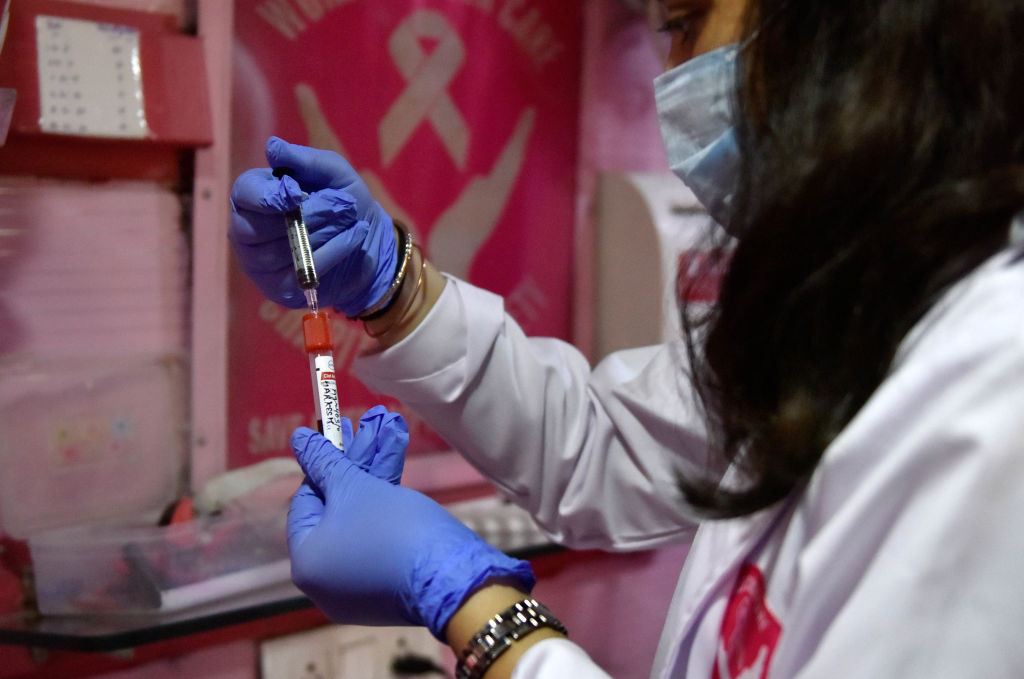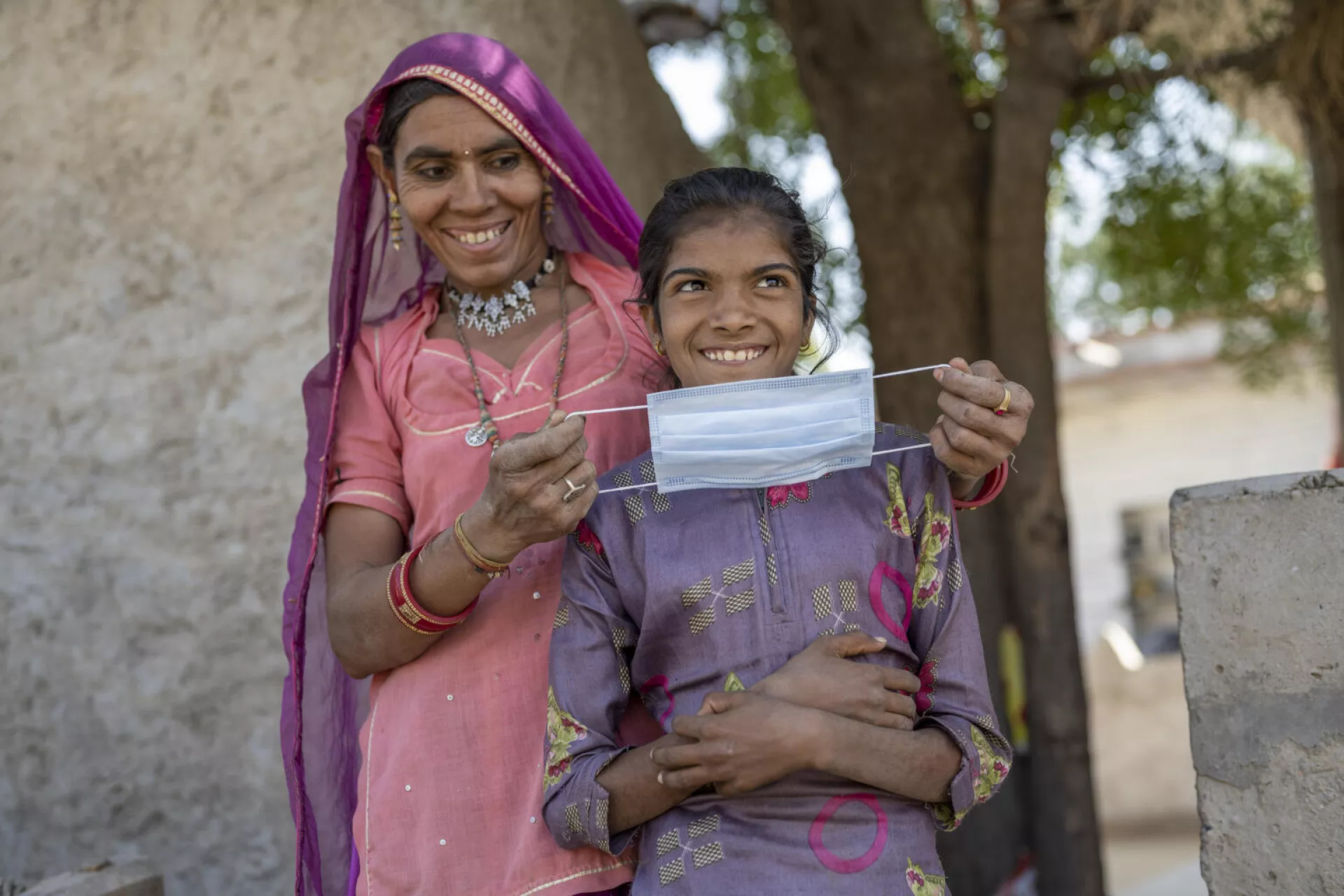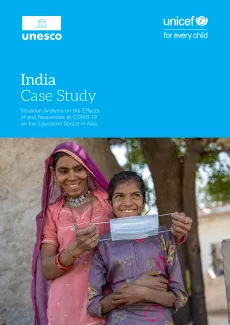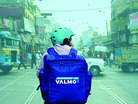- Skip to Content
- Skip to Main Navigation
- Skip to Information Links
- Skip to Site Search
- Skip to Footer
- Skip to Accessibility Information


Main Navigation
Strategy: case study - the times of india - readers react to star appeal.
For a newspaper to be highly respected and trusted by its readers it needs to engage its audience on a personal level and encourage interaction with the subjects it covers. The Times of India not only wanted to interact with its readers, it wanted them to become actively involved in the politics of India, thereby becoming a part of the news it covers.
Brand: The Times of India Client: The Times of India Brief: To encourage and facilitate social change and political awareness Target audience: Indian citizens aged between 25 and 45 Budget: Undisclosed Agency: JWT India
Rahul Kansal, The Times of India brand director, says: "Our main aim was to evolve the newspaper's relationship with its readers from being a mere disseminator of news to actively empowering readers."
The newspaper launched Lead India - a hunt for political leaders to encourage citizens to take action using The Times of India as a platform.
"We chose this particular subject because young Indians have very little faith in the level of sincerity and commitment of our political class," says Kansal. "Lead India was an attempt to re-engage Indian youth in the idea of the country's governance. And showcase some bright new candidates who could be future leaders."
The newspaper began engaging its audience a couple of years before, by launching various activist campaigns and a People's Manifesto to present to a newly-formed government.
The Lead India campaign sprung from these early ideas. It was important for the newspaper to surround its audience with both media that motivated and inspired such as TV, thematic press and radio, as well as media aimed at the individual, such as the internet, ground activity and tactical press.
Given budget constraints, the strategy was to run the campaign in short bursts, three bursts of ads two to three weeks at a time.
The campaign started with a Times of India front cover article on 1 January 2007. It called for readers to get involved in Indian politics instead of standing on the sidelines.
A DRTV ad followed, hosted by Indian actor Amitabh Bachchan, who volunteered to do the short film at no cost. It was shown on national television, cinema and shared across the web through YouTube and various blogs.
Kansal says: "To mobilise a large-enough body of Indian youth across the eight largest cities of India, we needed to push past their indifference. This meant that we needed to achieve very high decibel levels, even if only for short bursts of time."
The next step was to carry another front-page ad on Indian Independence Day, 15 August. It called for people to 'do' and featured Bollywood actor Shahrukh Khan. Many more celebrities then volunteered to help raise the campaign's profile.
After more than 37,000 responses, a prime time TV show was launched to find a winner who would be supported to contest a constituency of their choice. Eight finalists were questioned and challenged over 10 weeks by a panel of high profile political and social figures.
Devang Nanavati, a lawyer from Gujarat, won the support of The Times of India and will campaign in upcoming elections.
There were over 37,000 responses to Lead India and its website registered more than 1.3 million hits. There were more than a million YouTube downloads and the TV programme was broadcast on India's biggest network.
"We were surprised at the results," says Kansal. "As per initial estimates, we'd have been happy with a response of two to five thousand."
The campaign, which scooped the Direct Grand Prix at this year's Cannes Lions awards, will continue in to next year. The Times of India plans to encourage further response and will synchronise future activity with the 2009 general elections.
TXT2EMAIL - You can send a copy of this article to a friend's email account by texting 'MxD 1150 recipients email address,' to 86222. Messages are charged at standard network rates. Powered by Shift Click.
Join a growing community of media, marketing and advertising professionals today
Read exclusive registrant only articles
Read more articles each month
Sign up for free specialised news bulletins
Stay signed in
Forgotten password?

Product details

Why a New Study Dubbed India the ‘Cancer Capital of the World’

A new study has unveiled an alarming picture of declining overall health in India. The report, released by the Indian multinational healthcare group, Apollo Hospitals, found that skyrocketing cases of cancer and other non-communicable diseases across the country have now made it “the cancer capital of the world.”
The report is an "attempt to highlight the growing 'silent epidemic' that needs prioritized action by every Indian," the authors write.
Despite reporting more than a million new cases every year, India’s cancer rate has not yet surpassed countries like Denmark, Ireland, and Belgium, which record some of the highest cancer rates in the world. It is also currently lower than the U.S., reporting 100 cases for every 100,000 people compared with 300 in the U.S.
But that could soon change due to what some experts have called an “epidemiological transition.” The new report finds that currently, one in three Indians is pre-diabetic, two in three are pre-hypertensive, and one in 10 struggles with depression. Moreover, chronic conditions like cancer, diabetes, hypertension , cardiovascular diseases, and mental health disorders are now so prevalent that they have reached “critical levels,” according to the report.
In particular, the number of cancer cases is expected to rise at a rate that will surpass global averages—from 1.39 million in 2020 to 1.57 million by 2025. Among women, the most common forms of cancer are breast cancer, cervix cancer, and ovarian cancer. Among men, they are lung cancer, mouth cancer, and prostate cancer. While men generally report a 25% higher incidence of cancer than women globally, India bucks this trend with more women getting diagnosed with cancer, according to a study published in the Lancet Oncology . Certain cancers are also affecting younger people sooner than in the U.S., U.K., and China. The median age for lung cancer, for example, is 59 in India, but 70 in the U.S., 68 in China, and 75 in the U.K., according to the new report.
The high incidence of cancer stems from a mix of environmental and socioeconomic factors, like high levels of pollution, as well as lifestyle and dietary preferences. Almost 40% of cancer cases in India are due to rampant tobacco use, which significantly elevates the risk of lung, oral, and throat cancers, while factors like poor diet and lack of physical activity cause 10% of cases.
The report also warns of an eventual healthcare crisis across the country because of a surge in obesity rates (9% in 2016 to 20% in 2023) and hypertension (9% in 2016 to 13% in 2023). Moreover, pre-diabetes, prehypertension, and mental health disorders are manifesting at increasingly younger ages, while the risk of obstructive sleep apnea among Indians has reached higher proportions.
“The importance of health in our nation’s development cannot be overstated,” said Dr Preetha Reddy, the Vice Chairperson of Apollo Hospitals Group. “We strongly believe that the entire healthcare ecosystem and the nation needs to come together and have a unified outlook so that we can combat non-communicable diseases in the truest sense.”
The experts highlighted the importance of regular health screenings , including monitoring blood pressure and body mass index levels, in reducing the risk of cardiac-related ailments. Currently, India has a screening program in place for oral, breast, and cervical cancer, but screening rates are less than 1%, according to national data. However, the latest report also noted that “people are increasingly choosing more comprehensive health checks today than before,” highlighting a “positive step” towards safeguarding health and wellness.
Still, the experts warn that health checks need to expand their reach across India. In the long term, that can only be done “by prioritizing investments in health infrastructure, promoting preventive healthcare measures, and addressing health inequities,” the report stated.
More Must-Reads From TIME
- Exclusive: Google Workers Revolt Over $1.2 Billion Contract With Israel
- Jane Fonda Champions Climate Action for Every Generation
- Stop Looking for Your Forever Home
- The Sympathizer Counters 50 Years of Hollywood Vietnam War Narratives
- The Bliss of Seeing the Eclipse From Cleveland
- Hormonal Birth Control Doesn’t Deserve Its Bad Reputation
- The Best TV Shows to Watch on Peacock
- Want Weekly Recs on What to Watch, Read, and More? Sign Up for Worth Your Time
Write to Astha Rajvanshi at [email protected]
- SUGGESTED TOPICS
- The Magazine
- Newsletters
- Managing Yourself
- Managing Teams
- Work-life Balance
- The Big Idea
- Data & Visuals
- Reading Lists
- Case Selections
- HBR Learning
- Topic Feeds
- Account Settings
- Email Preferences
How Amazon Adapted Its Business Model to India
- Vijay Govindarajan
- Anita Warren
Mom-and-pop store owners are partners, not competitors.
When Amazon decided to enter the Indian e-commerce market, it was clear from the outset that something would have to give. That something was the very business model that had made Amazon an internet powerhouse in the U.S.
- Vijay Govindarajan is the Coxe Distinguished Professor at Dartmouth College’s Tuck School of Business, an executive fellow at Harvard Business School, and faculty partner at the Silicon Valley incubator Mach 49. He is a New York Times and Wall Street Journal bestselling author. His latest book is Fusion Strategy: How Real-Time Data and AI Will Power the Industrial Future . His Harvard Business Review articles “ Engineering Reverse Innovations ” and “ Stop the Innovation Wars ” won McKinsey Awards for best article published in HBR. His HBR articles “ How GE Is Disrupting Itself ” and “ The CEO’s Role in Business Model Reinvention ” are HBR all-time top-50 bestsellers. Follow him on LinkedIn . vgovindarajan
- AW Anita Warren is a business writer and marketing consultant in New Hampshire.
Partner Center

- High contrast
- About UNICEF
- Children in South Asia
- Where we work
- Regional Director
- Goodwill ambassador
- Work with us
- Press centre
Search UNICEF
India case study, situation analysis on the effects of and responses to covid-19 on the education sector in asia.

Highlights:
This case study provides a snapshot of the educational responses and effects of COVID-19 in India and is part of a comprehensive assessment of the effects of and responses to COVID-19 on the Education Sector in Asia.
The case study considers the direct effects of school closures and reopening and identifies its impact on learners, their families as well as on the overall education system. The objectives of the analysis are:
- to assess and estimate the various impacts of the COVID-19 epidemic on the education sector and stakeholders in India;
- to examine policy and financial implications on progress towards achieving SDG 4-Education 2030; and
- to identify examples of promising responses and strategies in education and associated social sectors, which can be shared with other countries. Finally, the case study presents lessons learned and recommendations for building back better and increasing the resilience of the education system to future shocks.
This case study includes an in-depth thematic deep dive into Community-based Education and how it supported continuity of learning during school closures.
This case study is based on a comprehensive desk-review of qualitative and quantitative evidence and on key informant interviews with relevant education officials, local authorities and teachers.
This situation analysis is a collaboration between UNESCO, UNICEF ROSA and UNICEF EAPRO partly funded by the Global Partnership for Education (GPE) under the UNESCO-UNICEF-World Bank joint project on Global and Regional Response to the COVID-19 Pandemic.
See all country case studies, sub-regional and regional reports here .
Author/s: UNICEF ROSA, UNICEF EAPRO, UNESCO Bangkok & Cambridge Education
Publication date : October 2021

Files available for download
Related topics, more to explore, situation analysis - covid-19 and education.
Effects of and responses to COVID-19 on the education sector in Asia
The future of 800 million children across Asia at risk as their education has been severely affected by the COVID-19 pandemic
Celebrating Radio Excellence for Child Rights
Safer schools, secure futures.
n partnership with the European Union in Afghanistan, UNICEF is ensuring children have safer, more conducive learning environments to pursue an education
Subscribe Now! Get features like

- Latest News
- Entertainment
- Real Estate
- PBKS vs RR Live Score
- Election Schedule 2024
- Win iPhone 15
- IPL 2024 Schedule
- IPL Points Table
- IPL Purple Cap
- IPL Orange Cap
- AP Board Results 2024
- The Interview
- Web Stories
- Virat Kohli
- Mumbai News
- Bengaluru News
- Daily Digest

First case of ultrasonic 'distress call' by Brazilian frog species documented in new study
New Delhi, A new study claims to have documented the "first" case of an ultrasonic 'distress call' made by a Brazilian frog species' for self-defence.

While humans would be incapable of hearing this scream, researchers said the distress call had an "ear-piercing intensity" for many animals, including predators of amphibians such as bats, rodents and small primates all of which can emit and hear sounds in the ultrasonic range.
The research team studied the screams of leaf litter frog , a species endemic to the Brazilian Atlantic Rainforest.
"One of our hypotheses is that the distress call is addressed to some of these , but it could also be the case that the broad frequency band is generalist in the sense that it's supposed to scare as many predators as possible," said the study's author Ubiratã Ferreira Souza, from the State University of Campinas Institute of Biology , São Paulo, Brazil.
Another hypothesis is that the scream could be a cry for help, meant to attract another animal to attack the predator threatening the amphibian, the researchers said.
When the frog made the distress call, the researchers observed the movements of the frog typical of its defence against predators.
The frog raises the front of its body, opens its mouth wide and jerks its head backward. It then partially closes its mouth and emits a call that ranges from a frequency band audible to humans to an inaudible ultrasound band , they described.
"In light of the fact that amphibian diversity in Brazil is the highest in the world, with more than 2,000 species described, it wouldn't be surprising to find that other frogs also emit sounds at these frequencies," said Mariana Retuci Pontes, a PhD student at IB-UNICAMP, and a co-author of the article published in the journal Acta Ethologica.
Pontes initially discovered this scream strategy in another similar frog species at the Upper Ribeira State Tourism Park in Iporanga, São Paulo. She saw that its defensive movement and distress call "closely resembled" those of the leaf litter frog.
She also noted the presence of a lancehead pit viper a subfamily of vipers found in Asia and the Americas a few feet away, which to her confirmed the frog's behaviour to be in response to predators.
While the use of ultrasound is known to be common among mammals and has also been observed in Asian amphibian species, albeit for communication, the use by amphibians to defend themselves against predators was so far unknown, the researchers said.
The team now plans to address new questions that this discovery raises, including the identification of predators sensitive to the distress call, their reaction to it, and whether the call is intended to scare them or to attract their natural enemies.
This article was generated from an automated news agency feed without modifications to text.
- Distress Call
Join Hindustan Times
Create free account and unlock exciting features like.

- Terms of use
- Privacy policy
- Weather Today
- HT Newsletters
- Subscription
- Print Ad Rates
- Code of Ethics
- Elections 2024
- India vs England
- T20 World Cup 2024 Schedule
- IPL 2024 Auctions
- T20 World Cup 2024
- Cricket Players
- ICC Rankings
- Cricket Schedule
- Other Cities
- Income Tax Calculator
- Budget 2024
- Petrol Prices
- Diesel Prices
- Silver Rate
- Relationships
- Art and Culture
- Telugu Cinema
- Tamil Cinema
- Exam Results
- Competitive Exams
- Board Exams
- BBA Colleges
- Engineering Colleges
- Medical Colleges
- BCA Colleges
- Medical Exams
- Engineering Exams
- Horoscope 2024
- Festive Calendar 2024
- Compatibility Calculator
- The Economist Articles
- Explainer Video
- On The Record
- Vikram Chandra Daily Wrap
- PBKS vs DC Live Score
- KKR vs SRH Live Score
- EPL 2023-24
- ISL 2023-24
- Asian Games 2023
- Public Health
- Economic Policy
- International Affairs
- Climate Change
- Gender Equality
- future tech
- Daily Sudoku
- Daily Crossword
- Daily Word Jumble
- HT Friday Finance
- Explore Hindustan Times
- Privacy Policy
- Terms of Use
- Subscription - Terms of Use
- India Today
- Business Today
- Reader’s Digest
- Harper's Bazaar
- Brides Today
- Cosmopolitan
- Aaj Tak Campus
- India Today Hindi
Rajasthan school bars rape survivor from taking exam: 'Will spoil atmosphere'
A girl in rajasthan's ajmer was stopped from appearing for her class 12 board examination as she was a gang-rape victim. the school teachers told her that her presence in the school "will spoil the atmosphere" and asked her to study at home..
Listen to Story

- Rape survivor alleges school didn't issue admit card to appear for Class 12 exam
- Complaint lodged with Child Welfare Committee, panel sought action against school
- Efforts were on to allow victim to appear for board's supplementary exam
A Class 12 student in Rajasthan's Ajmer has alleged she was not allowed to give her board examination as she was gang-raped last year. She also alleged that her teachers told her to study at home as her presence "will spoil the atmosphere" of the school, an official said.
The matter came to light when the victim wrote to the Child Welfare Committee about the incident. In her complaint, the survivor said she had appeared for the board exams four months ago and the school did not give her admit card to appear for the examination, Child Welfare Committee Chairperson Anjali Sharma said.
The school told the victim that her name had been struck off from its list of students appearing for the examination, Sharma added.
Taking note of the matter, Sharma said she wrote to the District Education Officer asking to take strict action against the school and ensure that the survivor's academic session was not hampered.
"The victim appeared for her board examination in December last year. But, she was not allowed to give her examination as the school did not give her admit card. School teachers told her to study at home or else the school's atmosphere would be spoilt," Sharma said.
"A copy of our letter has also been handed over to the District Collector. Besides, the Child Welfare Committee is also in talks with the District Legal Services Authority to ensure legal help is being provided to the survivor," she added.
IN THIS STORY
Latest Stories
- more Entertainment Worth Health IPL 2024 Women's Day 2024
11 Most Mysterious And Sensational Cases Of Murder In India
It’s always exciting to watch or read a murder mystery, but what’s your take on true crime? Recently, the entire nation was left biting their nails and glued to their couches when the Arushi verdict came out.
And a similar something happened a couple of months ago, during the Sheena Bora murder mystery. Well, could we ever forget questioning who killed the innocent Pradyumn Thakur? I guess not! There’s nothing more chilling than an unsolved murder case – and India has quite a few. Even when in some of the cases the court has ruled their decision, deep down it is hard for us to accept it.
Let’s have a look at some of the most sensational murder cases of India:
1. Arushi Murder Mystery

New Express
Arushi Talwar and Hemraj Banjade are two names that shook India on 16 th May, 2008. The then 14-year-old Arushi was murdered along with 45-year-old Hemraj and a lot of names appeared on the accused list. The case aroused a lot of public interest and received incredible amounts of media coverage.
For the longest time, the nation kept on conjecturing who the murderer was: was it her father or her mother? Could it be the other two servants? We don’t know. What we now know is that the parents have been acquitted and as of now, no one really killed Arushi .
2. Pradyumn Thakur, Ryan International School

Back in September, a Class II student was found dead in the washroom of Gurgaon’s Ryan International School. The innocent kid, who apparently caused no harm to anyone was initially thought to have been killed over a sexual-assault situation, following which a bus conductor was arrested.
However, just recently, a report has come out that claims a Class XI student killed him to postpone the exams. As the picture gets murkier, many are questioning how the bus conductor came into the picture in the first place?
3. Jessica Lal

Anyone who grew up or lived in Delhi in the 90s remembers the Jessica Lal case. Back in 1999, the headlines on most newspaper read ‘no one killed Jessica’. Eyewitnesses had amnesia and very few came forward to give an account of how the aspiring model was shot dead. Finally, it emerged that businessman Manu Sharma had shot Jessica after she refused to serve him liquor.
4. Sheena Bora

The gory death of Sheena Bora shocked the nation. Even more shocking was the arrest of her mother Indrani Mukerjea for deliberately plotting her murder. Mukerjea had never admitted to having two children and even claimed Sheena was her sister. The murder brought the spotlight onto the murky financial dealings of Indrani and her husband Peter Mukerjea.
5. Amar Singh Chamkila
A popular Punjabi singer, songwriter, musician, and composer, Chamkila was killed on 8th March 1988 along with his wife and two members of the band, allegedly by a gang of unknown youths. Despite being killed in broad daylight and in front of many people, no one was arrested.
A lot of his associates complained that Chamkila was receiving because of his work, but where exactly those threats came from is still a mystery to many. Most of his compositions were on extra-marital affairs, coming of age, drinking, and drug use.
6. Sunanda Pushkar

Dynamite News
A renowned businesswoman and the wife of a former Indian diplomat and politician Shashi Tharoor, Pushkar was killed in a hotel room in Delhi's Leela Palace. Reports suggest that her husband Shashi discovered her body and just assumed that she was asleep. It was only when Pushkar did not wake up that he informed the police of the death.
She allegedly died a day after she accused Pakistani journalist Mehr Tarar of stalking her husband on Twitter. When Pushkar’s body was sent for post-mortem, the conclusion was that she had committed suicide. However, a report from the All India Institute of Medical Sciences doctors claimed injury marks, followed by the death of drug overdose.

Chacko’s fault was that he resembled a man named Sukumara Kurup. The latter killed him in order to claim an insurance amount of Rs 8,00,000. As per reports, Chacko was strangled and his body was burnt inside Sukumara Kurup’s car.
Sukumara, who is now one of the most wanted criminals in Kerala is said to have fled abroad and his whereabouts are still unknown. This murder mystery is officially one of Kerala’s oldest unsolved cases.
8. Adnan Patarwala

Son of a businessperson from Mumbai, Adnan was killed on 18 August 2007. From what we know, he was initially kidnapped for Rs 2 crore ransom but was murdered the next day when the information became public. Five people were accused of murdering him, but on 30 Jan 2012, four out of five people were acquitted.
9. Neeraj Grover murder

This case received a lot of attention because of how gruesome it was. Neeraj Grover’s body was chopped into pieces and stuffed in three garbage bags and set ablaze in the forest.
One of his friends, Maria Susairaj, who even filed a complaint with the police that he went missing was later found to be involved in the killing. It was then discovered that Maria’s boyfriend killed Neeraj in a fit of rage, suspecting that his wife was having an affair. If you want to have a hang of the movie, you might want to check Not a Love Story – an adaptation that closely reflects what really happened then.
10. Pramod Mahajan
We all know Mahajan from his flamboyant life and his son who lately became part of several TV shows, but have we made our peace with his murder mystery? The Bharatiya Janata Party politician was killed in broad daylight inside his house. Pramod was shot dead by his younger brother, Pravin on April 2006, who immediately walked to the nearest police station and confessed. I am Pravin… I shot Pramod.” he said. His brother’s open declaration on the murder surprised a lot of people. Pravin was given life imprisonment and died in in March 2010 of a suspected brain haemorrhage.

11. Sharath
In what looks like a kidnapping case gone wrong, a 19-year-old son of an Income Tax officer in Bangalore was murdered. His body was found near Ramohalli lake on the outskirts of the city with his hands were tied together. As it turns out, the kidnappers strangled him to death and dumped his body the same day he was kidnapped.
But the real twist in the story came when the police found out that kidnappers were his friends. A really close friend of the victim, Vishal was the mastermind behind the murder and abduction. 19-year-old Sharath was an engineering student and was killed by his friends because they wanted to clear off a loan.

Accept the updated Privacy & Cookie Policy
Congratulations Times Prime Member

The only membership you'll ever need
Most Read (In last 24 hrs.)
Supreme court judge's 'rip you apart' comment riles present, former judges, nia arrests bengaluru cafe blast mastermind, bomber from kolkata, 5 ayurvedic herbs that burn fat and help you in weight loss , personality test: the shape of your lips will give an insight into your personality traits, pune techie complains to canada-based accessory company, gets the reply: "your name is basically ...", watch: virat kohli's touching gesture, appeals to wankhede crowd to stop booing hardik pandya, citing thin canadian presence, canada retrenches india staffers, mc mary kom steps down as chef-de-mission of india's paris olympics contingent, bjp drops cm eknath shinde, deputy cm ajit pawar from list of star campaigners in maharashtra.
- Entertainment
- Coronavirus
- Movie Reviews
- elections 2023
- Gadgets Now
- Beauty Pageants
- Times top 10
- Times Fact Check
- TOI Features
- Infographics
- Get the APP
- Most Searched Products
- Good Governance
- Citizen Reporter
- Epaper Preferences
- Read Other Epapers

- Work & Careers
- Life & Arts
Become an FT subscriber
Try unlimited access Only $1 for 4 weeks
Then $75 per month. Complete digital access to quality FT journalism on any device. Cancel anytime during your trial.
- Global news & analysis
- Expert opinion
- Special features
- FirstFT newsletter
- Videos & Podcasts
- Android & iOS app
- FT Edit app
- 10 gift articles per month
Explore more offers.
Standard digital.
- FT Digital Edition
Premium Digital
Print + premium digital, digital standard + weekend, digital premium + weekend.
Today's FT newspaper for easy reading on any device. This does not include ft.com or FT App access.
- 10 additional gift articles per month
- Global news & analysis
- Exclusive FT analysis
- Videos & Podcasts
- FT App on Android & iOS
- Everything in Standard Digital
- Premium newsletters
- Weekday Print Edition
- FT Weekend newspaper delivered Saturday plus standard digital access
- FT Weekend Print edition
- FT Weekend Digital edition
- FT Weekend newspaper delivered Saturday plus complete digital access
- Everything in Preimum Digital
Essential digital access to quality FT journalism on any device. Pay a year upfront and save 20%.
- Everything in Print
- Everything in Premium Digital
Complete digital access to quality FT journalism with expert analysis from industry leaders. Pay a year upfront and save 20%.
Terms & Conditions apply
Explore our full range of subscriptions.
Why the ft.
See why over a million readers pay to read the Financial Times.
International Edition
- Share full article
Advertisement
Supported by
Some Colleges Will Soon Charge $100,000 a Year. How Did This Happen?
Some Vanderbilt students will have $100,000 in total expenses for the 2024-25 school year. The school doesn’t really want to talk about it.

By Ron Lieber
Reporting from Vanderbilt University in Nashville
It was only a matter of time before a college would have the nerve to quote its cost of attendance at nearly $100,000 a year. This spring, we’re catching our first glimpse of it.
Listen to this article with reporter commentary
Open this article in the New York Times Audio app on iOS.
One letter to a newly admitted Vanderbilt University engineering student showed an all-in price — room, board, personal expenses, a high-octane laptop — of $98,426. A student making three trips home to Los Angeles or London from the Nashville campus during the year could hit six figures.
This eye-popping sum is an anomaly. Only a tiny fraction of college-going students will pay anything close to this anytime soon, and about 35 percent of Vanderbilt students — those who get neither need-based nor merit aid — pay the full list price.
But a few dozen other colleges and universities that reject the vast majority of applicants will probably arrive at this threshold within a few years. Their willingness to cross it raises two questions for anyone shopping for college: How did this happen, and can it possibly be worth it?
Who Pays What
According to the College Board, the average 2023-24 list price for tuition, fees, housing and food was $56,190 at private, nonprofit four-year schools. At four-year public colleges, in-state students saw an average $24,030 sticker price.
That’s not what many people pay, though, not even close. As of the 2019-20 school year, according to federal data that the College Board used in a 2023 report , 39 percent of in-state students attending two-year colleges full time received enough grant aid to cover all of their tuition and fees (though not their living expenses, which can make getting through school enormously difficult). At four-year public schools, 31 percent paid nothing for tuition and fees while 18 percent of students at private colleges and universities qualified for the same deal.
Those private colleges continue to provide hefty discounts for people of all sorts of incomes. A National Association of College and University Business Officers study showed private nonprofit colleges and universities lowering their tuition prices by 56 percent from the rack rate during the 2022-23 school year.
Vanderbilt provides discounts, too, and its financial aid is extraordinarily generous. This year, it announced that families with income of $150,000 or less would pay no tuition in most instances .
Still, over 2,000 students there who get no need-based or merit aid will soon pay $100,000 or more. Why does Vanderbilt need all of that money?
Where the Money Goes
At a few small liberal arts colleges with enormous endowments, even $100,000 would not cover the average cost of educating a student, according to the schools. Williams College says it spends roughly $50,000 more per student than its list price, for instance.
In other words, everyone is getting a subsidy. Perhaps its list price should be over $100,000, too, so that its endowment is not offering unneeded help to wealthy families. Or, perhaps, a price that high would scare away low-income applicants who do not realize that they might get a free ride there.
According to Vanderbilt, its spending per undergraduate is $119,000. “The gap between the price and cost of attendance is funded by our endowment and the generous philanthropy of donors and alumni,” Brett Sweet, vice chancellor for finance, said in an emailed statement.
No one at the school would meet with me to break this figure down or get on the phone to talk about it. But Vanderbilt’s financial statements offer clues to how it spends money. In the 2023 fiscal year, 52 percent of its operating expenses went to faculty, staff and student salaries and wages, plus fringe benefits.
Robert B. Archibald and David H. Feldman, two academics who wrote “ Why Does College Cost So Much? ,” explained in their book why labor costs were so tricky at these institutions.
“The critical factors are that higher education is a personal service, that it has not experienced much labor-saving productivity growth, and that the wages of the highly educated workers so important at colleges and universities have soared,” they said. “These are economywide factors. They have little to do with any pathology in higher education.”
Critics of the industry still believe that a kind of administrative bloat has set in, driving up tuition with outsize salaries. But what is bloat, really?
Administrators oversee compliance, like the laws that have made it possible for disabled people to get to and through college and keep schools from discriminating against women. If we don’t like regulation, we can vote for different legislators.
Similarly, families in a free market can make alternative choices if they want fewer mental health practitioners and their bosses, computer network administrators, academic advisers or career counselors. And yet the first (prescreened) question that Vanderbilt’s chancellor, Daniel Diermeier, answered on family weekend this past fall was about whether Vanderbilt should invest even more in career advising in the wake of the school’s five-spot decline in the annual U.S. News rankings .
Is It Worth It?
If many families are not exactly lining up for a cut-rate residential undergraduate education, they’re still asking plenty of good questions about value. So is a $400,000 college education ever worth it?
It depends, and you knew that answer was coming, right?
Most college shoppers wonder about income outcomes, and it’s possible to search by undergraduate major on the federal government’s College Scorecard website . This program-level data exists for alumni who are four years out from graduation, though only for those who received any federal financial aid.
Vanderbilt’s biomedical/medical engineering majors have median earnings of $94,340 four years out. English language and literature majors are earning $53,767.
Those are fine results, but are they exclusive to Vanderbilt? “You could get an engineering degree at a state flagship university that’s just as valuable as something you’d get at Vanderbilt,” said Julian Treves , a financial adviser and college specialist whose newsletter tipped me off to the goings-on there.
I spent a few days trying to get Vanderbilt’s vice provost for university enrollment affairs, Douglas L. Christiansen , to talk to me and answer these questions squarely and more expansively, but I did not succeed. A university spokeswoman sent me some generalities in his name. “We are committed to excellence at all levels, from the quality of our faculty, programming, facilities and research labs to the services we provide to support the academic, emotional and social well-being of our students,” went the statement.
In anticipation of the absence of a substantive reply, I attended a group information session for 125 or so prospective students and asked there, too. The senior admissions officer who took the question refused to answer. I’d never seen that before, and I’ve been to these sessions at dozens of schools over the years.
But really, why should an actor in a competitive marketplace answer that question if the person doesn’t absolutely have to? Without publicly available, industrywide quantitative data on quality — happiness scores, customer satisfaction, measures of learning, return on friendship, the strength of career networks — the list price alone serves as a signal of excellence, to some shoppers at least.
And thousands of applicants respond to the signal each year by volunteering to pay the list price, even as the school rejects the vast majority of applicants. Or maybe they volunteer precisely because Vanderbilt and schools like it reject the vast majority of applicants.
So a $100,000 list price is not our highest-priority outrage. The spectacle of wealthy people freely purchasing luxury services is nothing new, even if it is a totally worthy object of scrutiny (and an understudied phenomenon by academics themselves, ahem).
What is a problem, then? Brent Joseph Evans , an associate professor of public policy and higher education at Vanderbilt’s college of education and human development, started his career as an admissions officer at the University of Virginia. There, he sold the institution to boarding school students in New England and teenagers in the Appalachian foothills.
The former group might pay $100,000 per year, though many of them won’t get into the Vanderbilts of the world in the first place. They will surely find their way somewhere.
But that latter group? Professor Evans is worried about their access to any school at all.
“We should care about whether they get into a state university system at a low cost and find a well-paying career that can keep them in the middle class,” he said. “I do think that sometimes any tension over what elite colleges are doing moves us away from what we should be caring about as a society.”
Read by Ron Lieber
Audio produced by Parin Behrooz .
An earlier version of this article misstated the surname of Vanderbilt’s vice provost for university enrollment affairs. He is Douglas L. Christiansen, not Christensen.
How we handle corrections
Ron Lieber has been the Your Money columnist since 2008 and has written five books, most recently “The Price You Pay for College.” More about Ron Lieber
The Economic Times daily newspaper is available online now.
Canada will reject 606,000 study permits in 2024. here are the calculations behind its international student cap.
Canada has unveiled its plan to reduce study permits for international students through a national cap model. The Net Zero First Year Growth Model aims to stabilize post-secondary student intake in 2024, with a target of 485,000 approved study permits.

Canada's most popular destination for international students will see the largest drop in study permits issued
ALLOCATION MODEL

Canada to hike fees of some permanent residency programs, starting April 30

How can the world make immigration work? Ask Canada
Read More News on

Better returns than stock, gold? Rolex, the new asset class for investments that transcends time.

Meesho is taking a road less travelled to keep up in its fight with Amazon, Flipkart

India is abandoning this healthy habit in droves

Where is Flipkart’s long-in-the-making IPO?

Turnaround Trouble: Why Thierry Delaporte is the third CEO to fail at turning around Wipro

Weekly Largecap Top Picks: These stocks scored 10 on 10 on Stock Reports Plus
Find this comment offensive?
Choose your reason below and click on the Report button. This will alert our moderators to take action
Reason for reporting:
Your Reason has been Reported to the admin.

To post this comment you must
Log In/Connect with:
Fill in your details:
Will be displayed
Will not be displayed
Share this Comment:
Uh-oh this is an exclusive story available for selected readers only..
Worry not. You’re just a step away.

Prime Account Detected!
It seems like you're already an ETPrime member with
Login using your ET Prime credentials to enjoy all member benefits
Log out of your current logged-in account and log in again using your ET Prime credentials to enjoy all member benefits.
To read full story, subscribe to ET Prime
₹34 per week
Billed annually at ₹2499 ₹1749
Super Saver Sale - Flat 30% Off
On ET Prime Membership
Unlock this story and enjoy all members-only benefits.
Offer Exclusively For You
Save up to Rs. 700/-
ON ET PRIME MEMBERSHIP
Get 1 Year Free
With 1 and 2-Year ET prime membership
Get Flat 40% Off
Then ₹ 1749 for 1 year
ET Prime at ₹ 49 for 1 month
Stay Ahead in the New Financial Year
Get flat 20% off on ETPrime
90 Days Prime access worth Rs999 unlocked for you

Exclusive Economic Times Stories, Editorials & Expert opinion across 20+ sectors
Stock analysis. Market Research. Industry Trends on 4000+ Stocks
Get 1 Year Complimentary Subscription of TOI+ worth Rs.799/-
Stories you might be interested in
- Hyderabad News
PM Security Lapse In Punjab Now Case Study For IPS

Visual Stories


IMAGES
COMMENTS
case studies News: Latest and Breaking News on case studies. Explore case studies profile at Times of India for photos, videos and latest news of case studies. Also find news, photos and videos on ...
Strategy: Case Study - The Times of India - Readers react to star appeal. For a newspaper to be highly respected and trusted by its readers it needs to engage its audience on a personal level and encourage interaction with the subjects it covers. The Times of India not only wanted to interact with its readers, it wanted them to become actively ...
The Times of India, also known by its abbreviation TOI, is an Indian English-language daily newspaper and digital news media owned and managed by The Times Group.It is the fourth-largest newspaper in India by circulation and largest selling English-language daily in the world. It is the oldest English-language newspaper in India, and the second-oldest Indian newspaper still in circulation ...
About. Abstract. The case discusses the fierce competition in Delhi and northern India between two major publishing houses - Hindustan Times and Times of India. The case focuses on the aggressive pricing strategies adopted by the companies to counter each other. However, to gain a bigger share, Hindustan Times'' Vice Chairperson Shobhana ...
In case of a rise of 100 bps to 8 per cent, it amounts to Rs 41,822. The above table shows that if RBI starts raising benchmark lending rates, the consequent impact on an individual's purse will ...
India and China share a 2,000 mile-long border, which has been a point of contention between the two countries for decades. The two nations fought a deadly war over the border territory in 1962 and skirmishes last year lead to the deaths of many soldiers.. Modi's ultra-nationalist government has repeatedly denied that there has been any Chinese incursion into its territory.
In particular, the number of cancer cases is expected to rise at a rate that will surpass global averages—from 1.39 million in 2020 to 1.57 million by 2025. Among women, the most common forms of ...
The Preliminary Exam for the Union Public Service Commission (UPSC) Civil Services Examination (CSE) in 2024 will take place on May 26, 2024. The UPSC CSE 2024 Admit Card is anticipated to be ...
Vijay Govindarajan. and. Anita Warren. July 20, 2016. When Amazon decided to enter the Indian e-commerce market, it was clear from the outset that something would have to give. That something was ...
In the internal document, called Adversarial Harmful Networks: India Case Study, Facebook researchers wrote that there were groups and pages "replete with inflammatory and misleading anti-Muslim ...
Readers like you make The Wire possible. Your contributions can help us provide in-depth reporting on social, political, and economic issues that affect our daily lives.
A study published in The Lancet Regional Health Southeast Asia journal found that India, along with China and Japan, were the three leading countries in Asia in terms of new cases and deaths in 2019. Cancer has become a more significant public health threat with 94 lakh new cases and 56 lakh deaths in 2019.
Highlights: This case study provides a snapshot of the educational responses and effects of COVID-19 in India and is part of a comprehensive assessment of the effects of and responses to COVID-19 on the Education Sector in Asia. The case study considers the direct effects of school closures and reopening and identifies its impact on learners, their families as well as on the overall education ...
New Delhi, A new study claims to have documented the "first" case of an ultrasonic 'distress call' made by a Brazilian frog species' for self-defence.
A study published in The Lancet Regional Health Southeast Asia journal found that India, along with China and Japan, were the three leading countries in Asia in terms of new cases and deaths in 2019. Cancer has become a more significant public health threat with 94 lakh new cases and 56 lakh deaths in 2019.
Toobin's 1996 book, "The Run of His Life: The People v. O.J. Simpson," inspired the FX series. Toobin said the Simpson odyssey captivated the country's psyche. There was love, violence ...
Narendra Modi has kept India on its swift upward path among the world's largest economies. Many Indians are better off, though wealth gaps have widened. Prime Minister Narendra Modi at a rally ...
The story. Tata is India's oldest and largest private sector business entity. Founded in 1868, the group now consists of more than 100 companies, with a turnover of more than $70bn. It has a ...
GCSE; Edexcel; Case study - development in an emerging country - India - Edexcel A brief introduction to India. India is a new emerging economy (NEE) that is experiencing rapid economic development.
A case for early alternative treatments The study, which published Wednesday in the journal JAMA Psychiatry, analyzed national health insurance data for the entire population of Taiwan for a 15 ...
Efforts were on to allow victim to appear for board's supplementary exam. A Class 12 student in Rajasthan's Ajmer has alleged she was not allowed to give her board examination as she was gang-raped last year. She also alleged that her teachers told her to study at home as her presence "will spoil the atmosphere" of the school, an official said.
Even when in some of the cases the court has ruled their decision, deep down it is hard for us to accept it. Let's have a look at some of the most sensational murder cases of India: 1. Arushi Murder Mystery. New Express. Arushi Talwar and Hemraj Banjade are two names that shook India on 16 th May, 2008. The then 14-year-old Arushi was ...
Top News in India: Read Latest News on Sports, Business, Entertainment, Blogs and Opinions from leading columnists. ... Study Overseas Expert Speak Tips and Tricks New-age careers Entrance Exams Admissions CBSE CBSE 12th Result Predictor 2021 Times Study Abroad Videos. ... Vietnam tycoon sentenced to death in $12.5 billion fraud case: What to ...
Close to 15 years of experimentation of empowering teachers with leadership qualities at a Delhi school became a case study at India's top B-school, Indian Institute of Management, Ahmedabad.
The response. Huawei realised that in order to compete in India it would have to invest heavily and get to know the market and its particular features. With this in mind, it established R&D and ...
At a few small liberal arts colleges with enormous endowments, even $100,000 would not cover the average cost of educating a student, according to the schools. Williams College says it spends ...
Canada has finally revealed details about its plan to curb the number of study permits each province issues to international students for the next two years. Canada has said it plans to decrease number of new international student permits issued, and the target for approved study permits for the year 2024 has been established at 485,000.
The January 2022 incident when Prime Minister Narendra Modi's convoy was stopped on a flyover in Punjab was used as a case study for the latest batch of IPS trainees at the Sardar Vallabhbhai ...